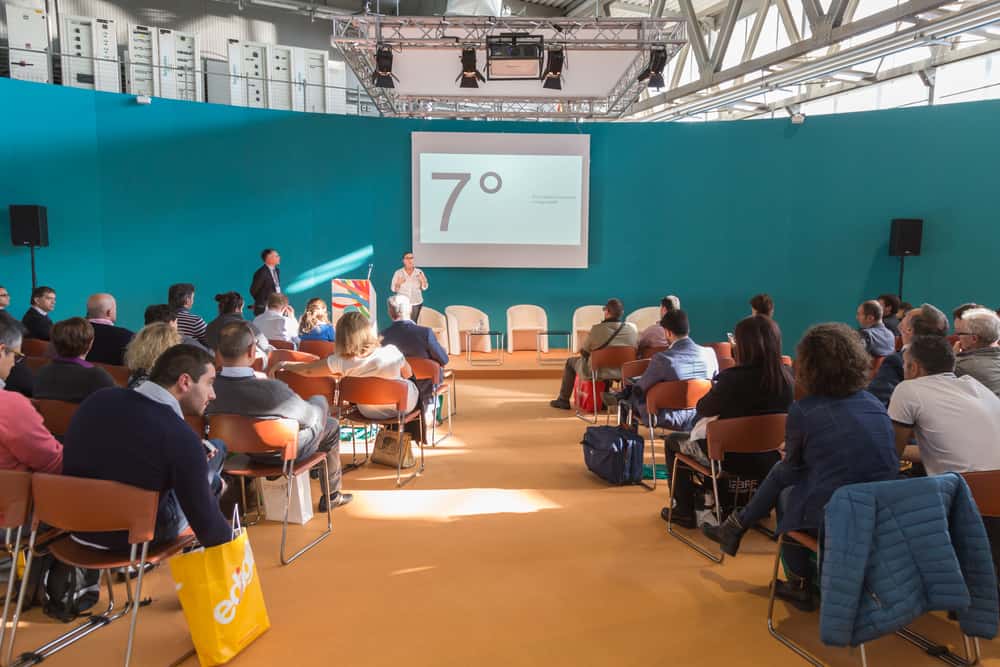Imagine it’s a typical morning. You’re sipping your coffee and scrolling through the news when a headline from ‘The Daily Mail’ stops you cold: “Killing Season.” The story claims an 8% hike in hospital deaths is tied to newbie doctors.
Sounds terrifying, right? Here’s the catch: the dramatic phrase twists a 2009 study’s findings into something far more sinister than reality.
The study, from Imperial College London, did note a slight uptick in mortality when fresh medical grads hit UK hospitals each August. But the figure cited in ‘The Daily Mail’ was taken from a larger figure in the report which factored-out patients with certain conditions.
Furthermore, the story did not highlight that the study found the odds of death for medical patients admitted on the first Wednesday in August were 8% higher than for surgical patients, suggesting that the increase in death rates might be more related to the type of admission rather than the new doctors.
Pinning each death directly on rookie doctors? That’s a leap the research never made. And yet, “Killing Season” became the story, a public narrative that was catchy but misleading.
Consider another story where science got twisted: the National Toxicology Program’s 2018 study on the effects of radiofrequency radiation (RFR). Some anti-5G activists hijacked this research, using it to fuel fears about 5G technology’s safety.
But here’s what they ignored: the study, which primarily examined 2G and 3G technologies and found some evidence of cancer in male rats exposed to high levels of RFR, not humans, found that those rats actually lived longer.
Critics pointed out methodological issues in the research, and the FDA warned against applying the findings to human cell phone usage.
In reality, extensive research has found no causal relationship between phone use and brain tumors. Despite this, the oversimplified, alarming narrative about the dangers of 5G took off, muddying the waters of scientific understanding.
In today’s fast-paced information landscape, the truth often finds itself tangled in a web of clickbait headlines and conspiracy theories. And in a world where clickbait and conspiracy theories are just a click away, the gap between scientific nuance and what the public hears is growing.
The rise of social media and the 24-hour news cycle have created fertile ground for misinformation to flourish, sometimes overshadowing fact-based discourse.
For scientists, this presents a daunting challenge: how do you ensure that accurate, evidence-based information cuts through the noise?
As we navigate this tangled web of sensational headlines and distorted truths, the need for scientists to step forward has never been more pressing.
It’s not enough to simply publish research in academic journals; the call now is to engage directly with the public, to demystify complex topics, and reclaim the narrative from those who would twist it for their own ends.
This article aims to provide you, the scientists and researchers dedicated to truth, with actionable strategies to effectively communicate your work and ensure that the public receives accurate, evidence-based information.
Let’s explore how you can extend your influence beyond academia and into the public sphere.
#1. Build a Public Presence Beyond Academia
In the digital age, your research shouldn’t be confined to academic circles alone. Establishing a public presence is crucial in countering misinformation. By stepping into the public arena, you can become a beacon of truth and a trusted source of knowledge.
Strategies:
- Write Blog Posts: Start a blog or contribute to existing platforms. Break down your research findings or current scientific debates in a way that’s accessible and interesting to the layperson. This not only educates the public but also humanizes you as a scientist, making your work more relatable.
- Participate in Public Forums: Engage in community talks, panel discussions, or webinars. These forums allow you to connect with the public and other experts, offering a space to discuss and clarify complex scientific issues openly.
- Engage with Non-Academic Audiences: Tailor your communication to fit the audience. Whether it’s speaking at a local school, writing an op-ed for a newspaper, or creating videos that explain your work, find ways to make your research interesting and accessible to those outside your field.
- Leverage YouTube & Other Social Media: YouTube offers the opportunity to share your insights and engage with a broader audience through the medium of video. Creating content for YouTube about your research, thought-provoking questions, or commentary on current scientific events can elevate your profile and ensure your voice is heard amid the noise.
Although Twitter (now X) was once widely embraced by scientists, recent shifts, particularly after Elon Musk’s acquisition, have led to a notable departure of scientists from the platform. The future landscape of preferred platforms remains uncertain. It may be prudent to consider other networks such as Thread, Facebook, Instagram, LinkedIn, or Mastodon to maintain and expand your public engagement.
By building a public presence, you’re not just sharing knowledge; you’re actively participating in the battle against misinformation. You’re ensuring that when someone searches for information on a topic you’ve studied, they find not just sensational headlines, but your informed, accurate insights as well. This isn’t just about protecting your work from misrepresentation; it’s about shaping a more informed, rational public discourse.
#2. Collaborate with Trusted Communicators
In an era where anyone can be a broadcaster or publisher, establishing partnerships with trusted communicators is more critical than ever. Journalists, educators, and influencers who prioritize accuracy can be invaluable allies. They can amplify your voice, extend your reach, and ensure your research is presented correctly. By working together, you can create a powerful coalition that champions truth and combats misinformation.
Strategies:
- Establish Relationships with Media Personnel: Get to know journalists and reporters who cover scientific topics. Make yourself available as a source for comments, clarifications, or in-depth interviews. When journalists understand your work and its implications, they’re more likely to report it accurately and come back to you for future stories.
- Contribute to Educational Platforms: Platforms like Khan Academy, Coursera, TeacherTube, and even YouTube educational channels are always in need of expert content. By contributing, you ensure that quality, accurate information is available and accessible. It also positions you as an authority in your field, reaching an audience eager to learn.
- Partner with Influencers: Some social media influencers have built substantial followings around educational content. Identify those whose values align with yours and explore ways to collaborate. This might include joint Q&A sessions, guest appearances on their platforms, or co-created content.
By collaborating with these trusted communicators, you’re not just correcting misinformation; you’re proactively preventing it. You’re ensuring that when your research reaches the public, it does so in a manner that is accurate, engaging, and, most importantly, true to the science. This collective effort can significantly impact how the public perceives and interacts with scientific information.
#3. Embrace Simplicity and Clarity
The power of simplicity and clarity cannot be overstated. Complex jargon and dense academic language can alienate the very people you’re trying to reach. The challenge, then, is to distill intricate concepts into clear, understandable language without sacrificing the precision and accuracy so vital to scientific communication. When done effectively, this approach not only educates but also engages and inspires the public.
Strategies:
- Avoid Jargon: Scrutinize your language for jargon and technical terms. When possible, replace them with simpler alternatives that convey the same meaning. If specialized terms are necessary, take the time to define them clearly.
- Utilize Storytelling: People are naturally drawn to stories. By weaving your scientific concepts into a narrative, you make them more relatable and memorable. Share the journey of discovery, the challenges faced, and the implications of your work. This not only conveys information but also connects emotionally with your audience.
- Employ Visuals and Infographics: Visuals can often convey what words cannot. Use diagrams, infographics, videos, and other visual aids to illustrate complex ideas. Well-designed visuals can make difficult concepts instantly understandable.
- Test Your Message: Before releasing your communication to the broader world, test it. Share it with friends or family members who don’t have a scientific background. Their understanding and feedback can be invaluable in ensuring your message is clear and accessible.
Embracing simplicity and clarity is not about dumbing down science; it’s about elevating the public’s understanding. By making your communication as clear and engaging as possible, you ensure that when your research reaches the public, it’s not just heard, but understood and appreciated. This clarity is your weapon in the fight against misinformation and sensationalism.
#4. Engage with Video and Multimedia
In our visually-driven world, video and multimedia are not just options but necessities for capturing attention and effectively communicating complex concepts. These tools can dramatically transform how scientific ideas are perceived and understood by the public. The good news is that engaging with video and multimedia doesn’t have to be overwhelming, even for those without prior production experience.
Strategies:
- Do It Yourself (DIY): For simple projects, user-friendly tools like iMovie, Windows Movie Maker, or online platforms like Lumen5 and Animoto can help you create basic but effective videos. If you’re interested in creating infographics, Canva is a straightforward design platform with many templates.
- Leverage Existing Resources: Many educational platforms, scientific organizations, and even other researchers may have already created videos or multimedia content relevant to your work. Platforms like TED-Ed, Khan Academy, or the National Science Foundation provide high-quality educational content that can be shared or used as inspiration.
- Hire Professionals: If you’re looking to create something more polished or don’t have the time to invest in learning new software, hiring professionals is a viable option. Freelancers can offer more personalized service and may be more budget-friendly. Platforms like Upwork or Fiverr connect you with video editors, animators, and graphic designers.
For larger or more complex projects, a specialized production company like Betterme Productions can guide you through the entire process, from conceptualization to final product. We work closely with scientists and researchers to produce inspirational videos that make scientific concepts accessible and engaging.
Tips for Working with Professionals:
- Clear Communication: Whether you’re working with a freelancer or a production company, clear communication about your goals, audience, and scientific message is crucial.
- Review Portfolios: Look at previous work to ensure their style and quality meet your expectations.
- Discuss Budgets and Timelines: Ensure you’re on the same page regarding how much the project will cost and how long it will take.
Remember, the goal is to convey your research in a way that resonates with the public. Whether you choose a DIY approach, utilize existing resources, or hire professionals, the key is to start where you are and use the tools available to you to share your work with the world.
By engaging with video and multimedia, you’re not just disseminating information; you’re telling a story. And in doing so, you’re creating an opportunity for your research to spark curiosity, drive conversation, and inspire a new generation to appreciate the wonders of science.
#5. Educate People on the Scientific Process
A fundamental understanding of how science works is just as crucial as the facts it uncovers. Educating the public about the scientific process demystifies research and fosters an appreciation for the rigor and reliability inherent in scientific inquiry.
It helps people understand why science sometimes delivers changing or evolving messages, especially as new data emerges.
By illuminating the path from hypothesis to peer-reviewed publication, scientists can build trust and combat the skepticism fueled by sensational headlines or misinformation.
Strategies:
- Share the Journey of Research: Use platforms like blog posts, podcasts, or videos to take the public behind the scenes of your research. Discuss how hypotheses are formed, what a day in the lab looks like, the trials and errors, and the excitement of discovery. This humanizes the process and shows the dedication and rigor involved.
- Explain Peer Review: Create content that explains what peer review entails and why it’s a cornerstone of scientific credibility. Address common misconceptions and highlight how peer review contributes to the accuracy and reliability of published research.
- Discuss the Iterative Nature of Science: Use specific examples to illustrate how scientific understanding evolves. Discuss historical instances where scientific consensus has changed due to new evidence, underscoring that science is a process of continual learning and refinement.
- Highlight the Role of Collaboration and Critique: Share stories of collaboration, debate, and critique within the scientific community. This underscores that science is a collective endeavor aimed at getting closer to the truth, not an individual pursuit.
By focusing on educating the public about the scientific process, scientists can cultivate a more informed and discerning audience.
Understanding how science works empowers people to critically evaluate claims they encounter and appreciate the nuanced, often cautious language of scientific findings.
This foundational knowledge is a key defense against the oversimplified and sensational narratives that often dominate public discourse.
#6. Address Misinformation Directly
In an age where a single viral myth can spread faster than factual corrections, the role of scientists in debunking misinformation is more vital than ever.
Engaging directly with the public to clarify misconceptions and counter myths is not just beneficial; it’s a necessary part of scientific advocacy. This direct engagement shows a commitment to truth and helps build public trust in science.
Strategies:
- Be Proactive, Not Just Reactive: Don’t wait for misinformation to spread uncontrollably. Monitor common misconceptions in your field and address them proactively through your communication channels.
- Provide Sources and Evidence: Link to reputable studies or consensus statements from trusted organizations. This not only strengthens your argument but also educates the public on where to find reliable information.
- Collaborate with Fact-Checkers: Work with organizations dedicated to fact-checking and debunking myths. They can amplify your voice and ensure your clarifications reach a wider audience.
- Create Myth vs. Fact Resources: Develop easily shareable content that contrasts common myths with the facts. This could be in the form of infographics, videos, or simple text posts.
- Engage with Respect and Empathy: Understand that those who believe in misinformation may not be intentionally spreading falsehoods; they might simply be misinformed. Engage with empathy and respect, aiming to educate rather than alienate. In your communications, encourage the public to ask questions and think critically about the sources and credibility of the information they encounter.
By actively engaging in the fight against misinformation, scientists can play a crucial role in shaping a more informed society. Addressing myths and misconceptions not only corrects the record but also demonstrates the scientific community’s commitment to truth and public well-being.
#7. Create a Community of Science Advocates
The battle against misinformation isn’t a solo endeavor. Building a robust community of science advocates amplifies the reach and impact of accurate information.
This community includes not just scientists, but also educators, students, journalists, policymakers, and engaged citizens. Together, this network can form a formidable front, promoting scientific literacy and fostering a society that values and understands the importance of science.
Strategies:
- Participate in Science Communication Training: Seek out workshops and courses that enhance your ability to communicate complex ideas effectively. Improving your storytelling, public speaking, and media engagement skills will make you a more effective advocate.
- Join or Create Outreach Programs: Engage with programs that connect scientists with the public. This might include giving talks at schools, participating in science festivals, or contributing to science blogs. If such programs don’t exist in your area, consider starting one.
- Encourage and Mentor Others: If you’re experienced in science communication, mentor students or early-career scientists who are interested in advocacy. Your guidance can help cultivate the next generation of science communicators.
- Celebrate and Share Successes: When members of your community have successful outreach experiences, share and celebrate these. Success stories inspire others and show the positive impact of science advocacy.
By fostering a community of science advocates, you’re not just fighting against misinformation; you’re contributing to a culture that respects and understands science. This collective effort can lead to a more informed public, better policy decisions, and a greater appreciation for the role of science in society.
Charting the Course for Science Advocacy
In an era teeming with misinformation and sensationalism, the need for scientists to take an active role in public communication has never been more critical.
Each step we’ve discussed isn’t just a tactic; it’s a call to embrace a broader view of your role as a scientist. You are not just researchers and educators within the confines of academia; you are beacons of truth in a society that desperately needs your light.
Our team is dedicated to helping scientists, researchers, and educators share the impact of their work through compelling and inspirational science video production.
If you’re struggling to make your research resonate with a broader audience, book a discovery call today so that we can explore the possibilities together.
Let’s collaborate to tell the story of your work in a way that captures imaginations and drives home the importance of accurate science.







